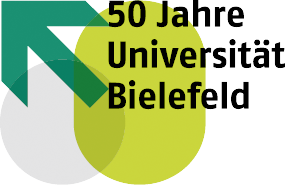–
Source: Universitätsarchiv Bielefeld, FS 35
The topic of the SFB 216 was methodically defined: polarisation and correlation are physical values, which shed light on the structure and dynamics of atomic collisions. These atomic collisions were generated by the interaction of atomic collision partners and their decay was observed. Through special preparation of the atomic partners (polarisation) and by measuring the relation between the particles, which split apart (correlation) after the atomic collision starts to decay, very detailed information was obtained. In particular, this made critical comparisons with theoretical calculations possible.
During its existence, the SFB had a decisive influence on the research and teaching activities of the faculties of Physics and Chemistry, helping Bielefeld’s natural sciences to gain considerable international visibility.

–
Photo: Gerhard Trott
Source: Universitätsarchiv Bielefeld, FOS 01703
The SFB 216 established the good tradition of Collaborative Research Centres at Bielefeld University. Since the the approval of the research projects – the SFB 223 (Pathomechanisms of Cellular Interactions) in 1985 and the SFB 177 (Comparative History of the Bourgeoisie and Middle Classes) in 1986, there have always been at least two funded Collaborative Research Centres at Bielefeld University at any one time.

–
Photo: Manfred Kettner
Source: Universitätsarchiv Bielefeld, FOS 00888

